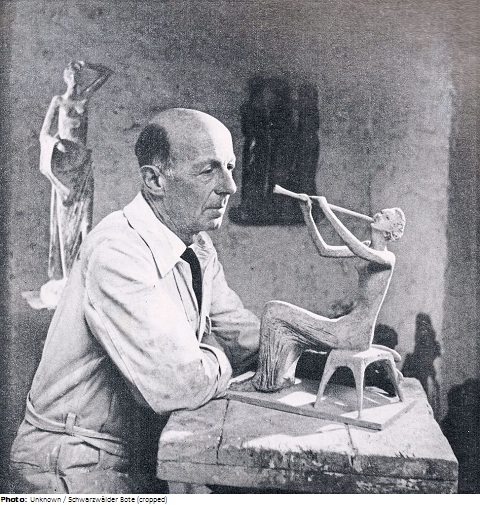After completing a sculpting apprenticeship in Offenbach, German sculptor Emil Sutor studied at the Academy of Fine Arts in Karlsruhe, and also temporarily in Leipzig and Dresden. From 1919 he ran his own studio in Karlsruhe. His main works were altars and Christian Leaders, among others Bernarduskirche in Baden-Baden and Peterskirche (St. Peter’s Church) in Mannheim. His most famous work was the bronze cast and gilded Media Award BAMBI (roe deer), which he created under the patronage of the Burda publishing house, and which is awarded annually for the most media attention given to a television performance.
At the 1936 Berlin Olympics Sutor earned the gold medal in the category Sculpturing, Reliefs, within the Art Competitions for his excellent work Hurdle Runners. In the new event for reliefs, only two medals were awarded, and no bronze medal was given. In the same year he joined the Nazi party and was represented at the “Great German Art Exhibition” in 1939 and 1940 in München with art works loyal to the party line. After the war he quickly had success again. The oak tree, which he received for his Olympic victory, grew in the garden of his house for more than 70 years.

 Germany
Germany GER
GER